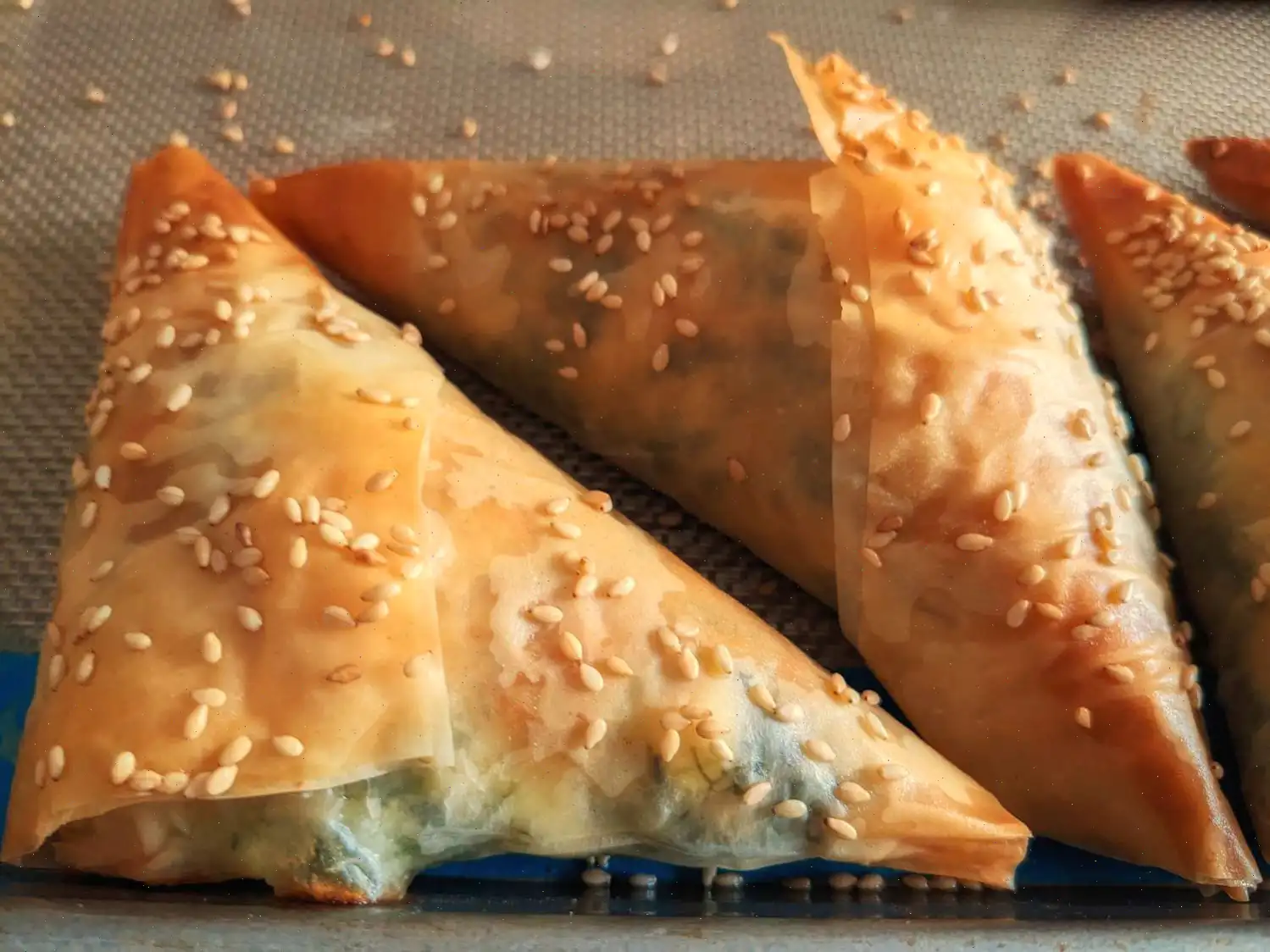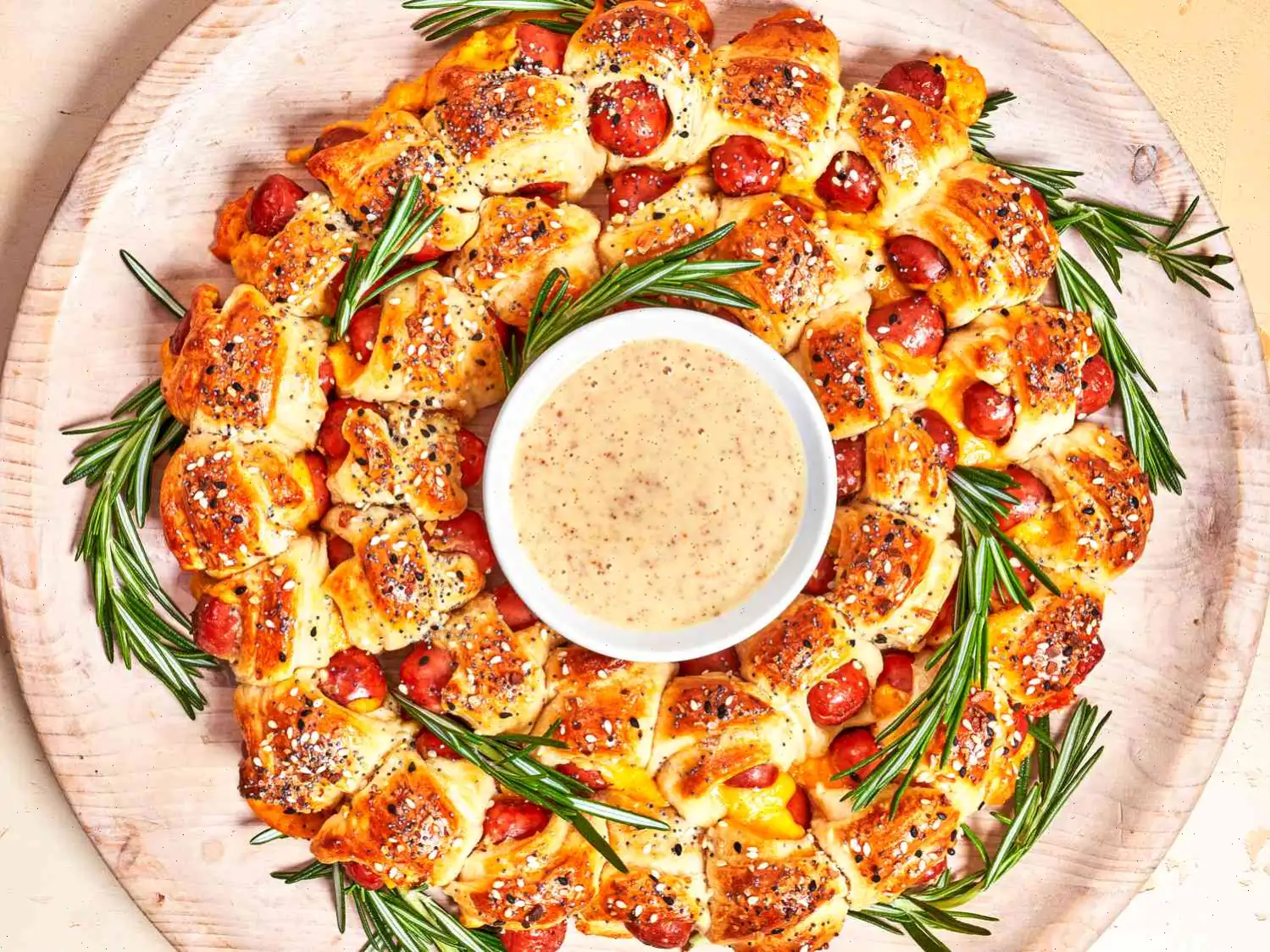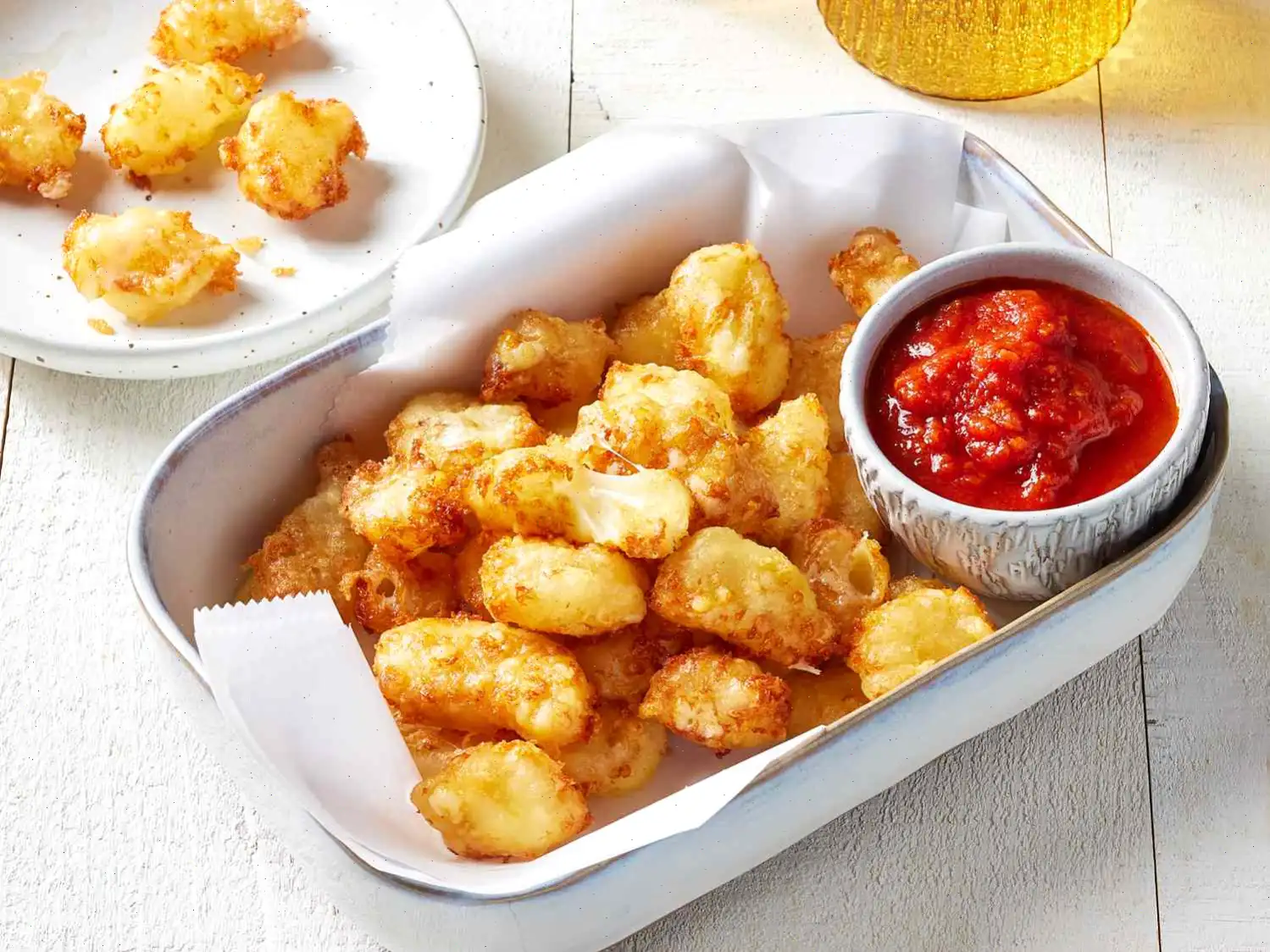
Greek Spanakopita Recipe
Ingredients:
- cup vegetable oil
- 2 large onions, chopped
- 2 (10 ounce) packages frozen chopped spinach, thawed, drained, and squeezed dry
- 2 tablespoons chopped fresh dill
- 2 tablespoons all-purpose flour
- 2 (4 ounce) packages feta cheese, crumbled
- 4 large eggs, lightly beaten
- Salt and ground black pepper to taste
- 1 (16 ounce) packages phyllo dough
- 1 cups butter, melted
Directions:
Step 1: Preheat the oven to 350F (175C).
Step 2: Heat the vegetable oil in a large saucepan over medium heat. Add the chopped onions and cook, stirring occasionally, until softened and translucent.
Step 3: Stir in the thawed spinach, fresh dill, and flour. Cook for about 10 minutes, stirring frequently, until most of the moisture from the spinach is absorbed.
Step 4: Remove the mixture from the heat. Stir in the crumbled feta cheese, lightly beaten eggs, and season with salt and black pepper. Set the filling aside to cool slightly.
Step 5: Separate one phyllo sheet from the stack and place it on a clean, flat work surface. Lightly brush the sheet with melted butter using a pastry brush.
Step 6: Place another phyllo sheet on top of the buttered sheet and press them together gently. Cut the layered phyllo sheets into long strips about 3 inches wide. Keep the remaining phyllo sheets covered with plastic wrap to prevent them from drying out.
Step 7: Lay one phyllo strip on the work surface with one narrow end facing you. Place a heaping tablespoon of the spinach and feta filling about 1 inch from the narrow end.
Step 8: Fold the bottom right corner over the filling to the left edge, forming a triangle. Continue folding the triangle upwards along the strip, making sure each fold is tight and secure.
Step 9: Once you reach the end of the strip, tuck in the corners to seal the triangle. Repeat this process with the remaining phyllo sheets and filling.
Step 10: Arrange the prepared phyllo triangles on a large baking sheet. Brush the tops of the triangles with the remaining melted butter.
Step 11: Bake in the preheated oven for 45 to 60 minutes, or until the phyllo is golden brown and crisp.
Cooks Note: If preparing in advance, you can freeze the phyllo triangles after Step 10. Arrange them on a baking sheet and freeze until firm. Transfer to a resealable plastic bag for storage. To bake from frozen, arrange the frozen pastries on a parchment-lined baking sheet and bake at 350F (175C) until golden brown and the filling is heated through. Check for doneness after 1 hour.
Nutrition Facts (per serving):
| Calories | 246 |
| Total Fat | 18g |
| Saturated Fat | 9g |
| Cholesterol | 62mg |
| Sodium | 313mg |
| Total Carbohydrates | 16g |
| Dietary Fiber | 1g |
| Sugars | 1g |
| Protein | 5g |
| Vitamin C | 2mg |
| Calcium | 81mg |
| Iron | 2mg |
| Potassium | 128mg |
* Percent Daily Values are based on a 2,000 calorie diet. Your daily values may be higher or lower depending on your calorie needs.

Author: Mary Kessler
Description: Greek Spanakopita is a savory pastry made with spinach, feta cheese, and herbs, wrapped in layers of delicate phyllo dough. It's a popular dish often served as an appetizer, snack, or even a light meal. With its crispy golden layers and rich, flavorful filling, spanakopita has become a beloved dish worldwide.
History of Spanakopita
Spanakopita has its roots in ancient Greece, where spinach and other greens were used in a variety of culinary dishes. The word spanakopita comes from the Greek words "spanaki" (spinach) and "pita" (pie), which perfectly describes this dish: a spinach pie. The dish evolved over time, particularly in the 16th century, when the phyllo dough was introduced to Greece through the Ottoman Empire. This innovation helped transform the dish from a simple vegetable pie into the crispy, flaky pastry we recognize today. Spanakopita became a staple in Greek cuisine and is often made for family gatherings, festive occasions, and holiday meals.
Regional Variations
While Spanakopita is a national treasure in Greece, different regions put their unique spin on it. In the northern parts of Greece, such as Thessaloniki, the dish often includes additional herbs like parsley or leeks, which give the filling a lighter flavor. In the islands of the Aegean, some recipes incorporate a bit of ricotta cheese alongside the traditional feta, adding a creamier texture. Additionally, the way the spanakopita is shaped can vary; while the classic triangles are popular, some regions prefer to make it as a large pie or even use smaller pastry parcels, perfect for serving as finger foods at parties or celebrations.
How is Spanakopita Different from Similar Dishes?
Spanakopita is often compared to other Mediterranean pastries, such as the Turkish Brek or the Middle Eastern Fatayer, but it stands out due to its specific use of feta cheese and spinach as the primary filling. Unlike Brek, which can be filled with a variety of ingredients including meat or cheese, Spanakopita focuses purely on vegetables and cheese, creating a lighter yet rich flavor. Another difference is the use of phyllo dough, which gives spanakopita its signature crispy and flaky texture, unlike other doughs that might be used in similar pies.
Where is Spanakopita Traditionally Served?
Spanakopita is a versatile dish that can be served in many settings. It is commonly enjoyed as an appetizer or snack at Greek family gatherings, parties, and holiday celebrations. It's also a popular street food in Greece, where it can be found in bakeries and food stalls, especially in cities like Athens. Abroad, spanakopita is a staple in Greek restaurants and is often included in Mediterranean-themed buffets. Whether served warm or at room temperature, spanakopita is perfect for sharing and is a favorite at both casual and formal occasions.
Interesting Facts about Spanakopita
- In Greece, it's common to prepare spanakopita during Lent when meat and dairy products are avoided, as the filling is vegetarian-friendly and rich in flavor despite the absence of meat.
- Spanakopita has a healthy side, thanks to its main ingredientspinach, which is rich in vitamins and iron. Combined with the calcium-rich feta cheese, it's a dish that packs both flavor and nutrition.
- Phyllo dough, used to make spanakopita, is incredibly delicate and can be tricky to work with. However, its this thin layering of dough that gives the dish its signature light and crispy texture.
- While spanakopita is primarily known as a savory dish, there are sweet variations of it that include ingredients like sugar and cinnamon, commonly found in certain regions of Greece.
You can listen to this recipe in AI audio format. Simply click the play button below to listen to the content in a format that suits you best. It’s a great way to absorb information on the go!
FAQ about Greek Spanakopita Recipe
Comments
Ryan Green
09/08/2022 02:40:21 AM
I made some modifications to the original recipe. I combined it with a scaled-down version from a friend who works in catering. I included 2 cups of thinly sliced crimini mushrooms, increased the feta to 16 ounces (crumbled from a block for better moisture), added two cloves of minced garlic, and about 1 to 1-1/2 tsp of dried rosemary (I prefer fresh but my plant died). My tips are: Do not cut the phyllo dough as it tears easily; instead, I butter half the sheet and fold it lengthwise on top of itself. I used one sheet for some (two layers) and layered others by folding one sheet on top of another for four layers. I couldn't decide which way I liked better. I added more filling to the folded ones. I might prefer the larger layers with more filling. Also, consider shaping the pastry into rolls instead of triangles for less hassle. I will freeze the next batch to see how they turn out. They would be a great addition to my entertaining repertoire.
Michael Nguyen
01/22/2024 09:25:01 AM
Great recipe and clear instructions! It turned out fantastic!
Jack Rivera
09/18/2022 03:59:21 AM
Great recipe! I enhanced it by including one crushed garlic clove and used 1.5 boxes of phyllo pastry. I prepared the dish in advance by freezing it on a cookie sheet and then baked it for 50 minutes straight from the freezer. Highly recommended!








